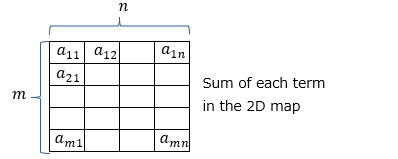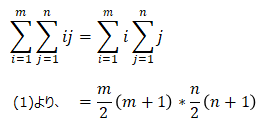How to calculate summation Σ and product Π |
||||
・Exponential function ・Arctan, tanh ・Matrix multiplication ・Transposed matrix ・Fourier transform ・Fast Fourier Transform ・Matrix derivative ・Manhattan/Euclidean distance ・Centroid ・Vertical bar ・Gaussian integral ・Cosine similarity ・summation Σ, product Π ・Decibel[dB] ・Numerical Differention ・Induction,deduction,abduction ・Spline curve ・Lagrange's Method of Undetermined Multipliers |
■summation:Σ
Σ represents the summation.The following calculates the sum of a sequence of numbers. ■product:π
π stands for product, and the following cases calculate the product of sequences.
|
|
||







